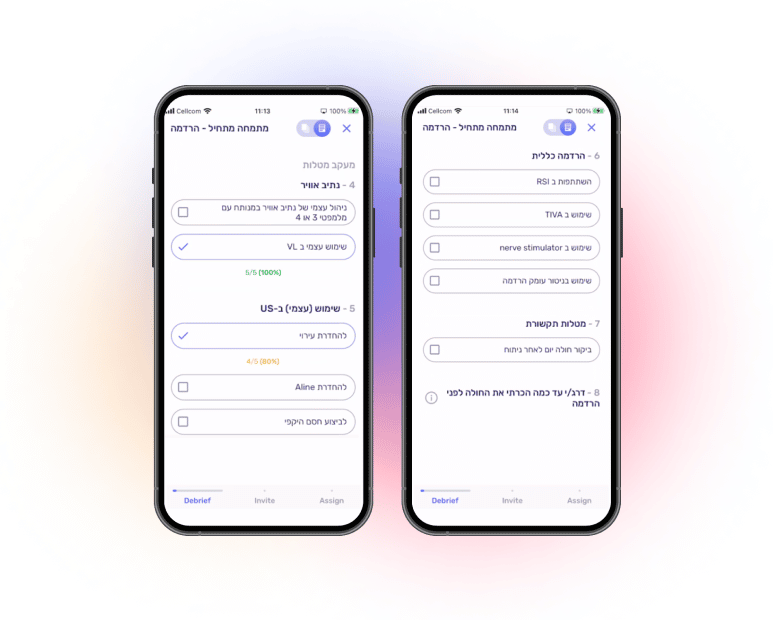Sheba Medical Center, Department of Anesthesiology Implementing the CBME approach for 1st and 2nd-year interns

Background
The Sheba Medical Center is world renowned Israeli teaching hospital. The Anesthesiology Department decided to incorporate the CBME framework and practices into the internship and residency program to improve anesthesiologist education’s process and outcome.
Challenge
CBME depends on bidirectional, real-time monitoring and feedback from students and faculty members. However, this cannot be achieved using only paper-based reviews. The Program Manager and staff also found it difficult to follow the progress of residents, conduct evaluations, and view resident self-evaluations.
Implementation
The Department deployed Shamaym in the clinical teaching rounds of advanced-year medicine students to conduct real-time monitoring and feedback of students and faculty in the CBME, EPAs, and WBAs domains.
The pilot included 17 residents and 21 specialists who downloaded the Shamaym App to their mobile phones and completed a digital debrief at the end of each workday. Filling out the form took approximately five minutes and required minimal typing.
The program manager used a real-time dashboard to monitor all pre-defined training activities, presenting quantitative scores and qualitative feedback inserted by students and faculty into the Shamaym App.
The scores included student attendance (professional), competencies (EPA), and bedside performance (WBA). Each student can access their scores; each faculty member can access their and their students' scores.
Results
Discovering departmental discrepancies:
The digital form required specifying post-operation reviews. The Program Manager discovered a discrepancy between the number of specialists and residents who reported a review.
Some specialists thought a few informal sentences constituted a review, while the residents did not realize this. The Program Manager rectified this by requiring specialists to state when conducting a review and allowing residents time to reply and ask questions.
Another problem was that many residents failed to make bedside visits post-surgery, underestimating its importance. However, once the Program Manager emphasized it, the number of visits rose to 100%.
What's next?
- We are expanding the use of the Shamaym App to all the residents and specialists of the Anesthesiology Department, including residents in advanced stages of specialization.
- We are deploying Shamaym to monitor the execution of simulations and workshops, i.e., service retention.
- We are connecting Shamaym to the patient information systems, Camelion or Mathuizen.
- Creating an easily accessible database of debriefs and lessons learned for future residents and specialists
High Student Engagement and Satisfaction
- The residents created debriefs for almost 100%of the working days.
- Almost 100% of the residents conducted self-evaluation after surgery.
- 100% of residents viewed debriefs that were shared by the Program Manager.
- Over 90% of the interns and residents thought the Shamaym App helped them execute their assignments better.